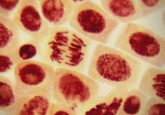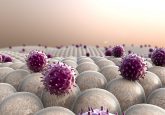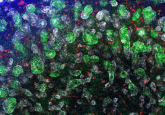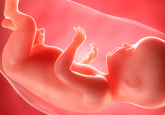Challenges and opportunities for allogeneic CAR-T therapies
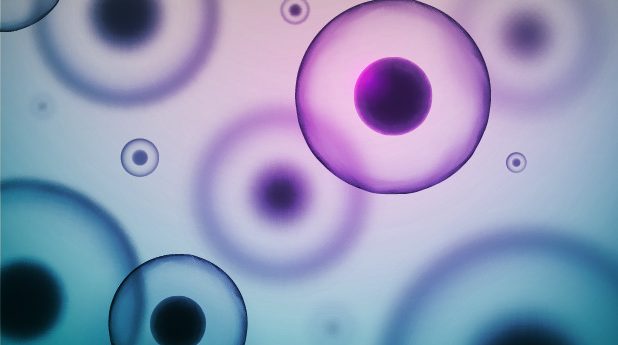
Senthil Ramaswamy (Lonza, Basel, Switzerland) discusses the potential for allogeneic therapies and the challenges in their development.
Recently, autologous CAR-T therapies have seen a surge in interest in light of
their exceptional efficacy and life-saving potential. Full realization of this potential for the target patient population, via the one batch equals one patient model, necessitates the manufacturing of such therapies to be rapidly scaled out to an order of magnitude of thousands, or potentially hundreds of thousands, of batches upon commercialization.
Cell therapy manufacturing today is often a manual and labor-intensive process with multiple open operations, leading to a very high cost of goods (COGs). Once a patient is identified, autologous therapies require patient cells to be collected. This is followed by the manufacturing process, which can often take between 2—4 weeks in the case of CAR-T, before the therapy can be provided to the patient. Patient cell performance in the manufacturing process can also vary significantly, leading to batch failures and therapy unavailability for the patient.
These challenges have led to a strong emphasis on the development of allogeneic CAR-T therapies, developed from cells of healthy donors, that could be available for patients immediately in a manner similar to other ‘off-the-shelf’ drugs. Allogeneic therapies could be envisioned to serve both as the primary therapy for a disease, once the desired patient efficacy is achieved, or as an additional line of treatment before they are ready for an autologous therapy, if efficacy in certain cases is limited.
By their nature, allogeneic CAR-T therapies enable traditional economies of scale — compared to scale out for autologous therapies — through expansion of batch sizes and increased productivity, making it possible to reach a larger patient population sooner. Clinical trials of allogeneic CAR-T therapies are continuing to increase with approximately 20 therapies currently in the early stages of development.
Scaling up manufacturing of allogeneic cell therapies relies on principles similar to biologic drug manufacturing processes with the unique difference that the product is the cell and precludes final sterile filtration. Consequently, the entire process must be performed in an aseptic manner. Furthermore, major process changes during late-stage clinical trials or after licensing may need complex comparability studies. Therefore, early-process design decisions must be made with great care to ensure that the product can be manufactured in a sustainable and competitive manner during later-stage clinical trials and subsequent commercialization.
This paper aims to highlight some of the most relevant considerations and challenges related to allogeneic cell therapy scale-up and potential approaches to address them.
A ‘generic’ process flow for an allogeneic CAR-T manufacturing process (Figure 1) typically consists of an activation and gene editing phase, at small scale, followed by a seed train and larger scale expansion of the modified T-cells. After expansion, any unmodified cells are removed from the product, prior to media exchange and formulation followed by drug product filling. There are various considerations that must be accounted for in the design and scale-up of this process.

Source of cell material
While a key challenge of autologous cell therapies lies in the variability associated with using the patient’s own cells as starting material, this challenge shifts to donor cell performance for allogeneic processes. The ideal approach for allogeneic processes is to generate a master cell bank of the source cells that can then be expanded into working cell banks, which reduces process variability and risk.
This approach is commonly used with pluripotent stem cell- and mesenchymal stem cell-based products. When the cells cannot be banked, due to limitations in the number of possible cell doublings, an alternative approach is to manage the variability by generating donor cell banks that can supply a limited number of product batches. Each new donor cell bank will require significant characterization but still represents a lower process risk than isolating batches of starting cells from fresh donors for each manufacturing lot.
Design of unit operations
The initial steps of an allogeneic cell therapy process — including cell isolation, gene editing and seed train — are often open and manual or semi-automated processes, independent of scale, due to the limitations of currently available technology. These processes need to be carried out in a Grade B cleanroom with open manipulations occurring within a Grade A biosafety cabinet. In addition, a number of allogeneic cell therapy processes in development rely on 2D or static cell culture vessels for cell expansion — for example, multi-layer culture vessels or GRex® (Wilson Wolf, MN, USA). Such processes can be difficult to control, challenging to scale-up due to the large labor requirements and manufacturing footprint, and also present an increased risk of contamination. Therefore, it is important to ensure that early development focuses on process steps that can be easily closed, automated and scaled up to prevent the need for major process changes at a later stage.
Purification of the correct population of cells may be needed in some cases, such as for allogeneic CAR-T processes where unmodified cells need to be removed from the product. This is commonly achieved via antibody-based positive or negative selection, using technologies such as Miltenyi Biotec’s (Bergisch Gladbach, Germany) magnetic microbeads or R&D Systems’ (MN, USA) Cloudzâ„¢ dissolvable hydrogel. These selection technologies are currently only available in small batch sizes and may not yet be suitable for scale up beyond 1—3 L or 10—20 billion cells and represent an area for further development.
In contrast to the above challenges, downstream processing, such as washing the cells prior to formulation, can be accomplished via a number of commercially available closed and automated processing technologies, such as the kSep® continuous centrifugation (Sartorius, Göttingen, Germany) and the LOVO (Fresenius Kabi, Bad Homburg, Germany), depending on scale and cell type. Final formulation and filling of vials remains a predominantly manual or semi-automated process; however, automated solutions, such as L1 Robotic Fill Line by Aseptic Technologies (Gembloux, Belgium), are available in the market and could be an attractive option for commercial supply.
Raw material considerations
A common challenge with cell therapy processes is the need for unique raw materials that are often critical to the process but are not available from a GMP compliant source. This can be further exacerbated if the materials are not chemically defined and are naturally sourced, such as growth factors, cytokines, serum and serum components. A GMP compatibility evaluation of all materials used for the cell therapy manufacturing process must be conducted early in the development process, with a deliberate push to identify GMP compatible alternatives where available or define a path to GMP with suppliers that meets product development timelines. In the event that both of these approaches are not possible, a careful control strategy to manage material sourcing and quality risks must be established, coupled with early regulatory feedback on the acceptability of the approach.
Single use technologies
Cell therapy manufacturing is fully reliant on sterile single use technologies (SUTs) to meet the stringent sterile manufacturing requirements of these processes. However, the majority of SUTs have not been designed with cell therapy processes or products in mind and careful attention must be paid to their selection. SUTs used for cell therapy manufacturing must be validated to a sterility assurance level (SAL) of 106 in order to meet sterile processing requirements.
In some cases, SUTs commonly used in non-sterile, low bioburden biopharma processes may have been validated to a less stringent sterility assurance level and will require additional validation by the supplier if they are to be incorporated into cell therapy manufacturing. Particles generated during the manufacture of SUTs can adhere to product contact surfaces and become detached during processing and end up in the final product.
In addition to working with suppliers of critical consumables, to reduce particle generation, large pore final filtration, which would allow product cells to pass through while retaining larger particles, could offer some mitigation to address this issue.
Another aspect of SUTs that can have a significant impact on cell growth and performance are leachables from the plastics and surface coatings, which could impact their functionality and must be appropriately characterized.
An important dimension of SUTs usage in cell therapy manufacturing is supply chain management and control. The majority of critical SUTs used in cell therapy processing are single-sourced, with no alternatives, and often represent only a small fraction of product sales for the supplier. These consumables are critical to the quality of the cell therapy product and any changes made to the design or manufacturing process of these consumables may have a major impact on the final product. Changes to raw materials or manufacturing process may not be viewed by the supplier as a major change; however, these changes could be highly impactful to sensitive cell therapy manufacturing processes. Therefore, strong partnerships with suppliers, coupled with education around the criticality and proximity of their product supply to the patient, are very important to avoid some of the above challenges.
Through scalability, speed of access and optimized COGs, allogeneic processes — specifically, allogeneic CAR-T processes — look very promising in their potential to complement the success of the autologous therapies for any target indication.
Developments from the extensive industrialization effort that is currently devoted to autologous cell therapies — including analytics, management of patient tissue variability, track and trace, and automation concepts — are no doubt going to be leveraged for allogeneic processes as well. The combination of autologous and allogeneic modalities can ensure that the life-saving potential of CAR-T therapy is accessible to a much larger population of patients through manageable COGs and efficacy-based treatment decisions.
Go to our Spotlight homepage
to see other amazing content, updated weekly!
Have any additional questions about this story? Ask us in the comments, below.
Find out more in these top picks from the Editor:
- Scaling allogeneic therapies: an interview with Senthil Ramaswamy
- CAR-T mesh shrinks ovarian tumors in mice
- How NICE view advanced therapies: an interview with Pilar Pinilla DomÃnguez
